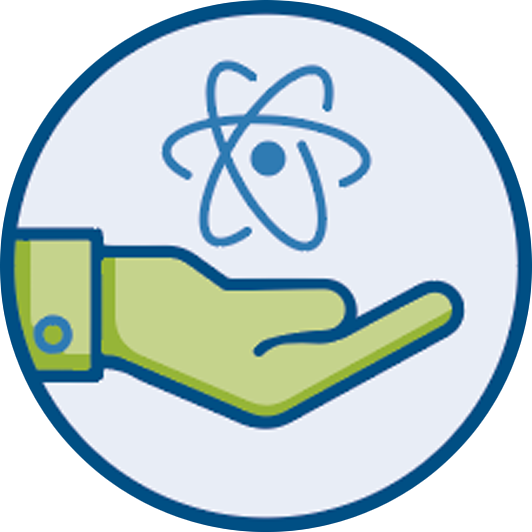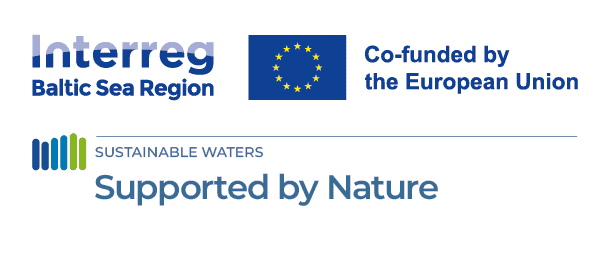
Explore our planned Learning Sites around the Baltic Sea
17 June 2025
The learning sites are planned, and some are already starting to take shape. Local people, organizations and experts have been involved from the start, making sure the sites are useful and long-lasting. Partners also share ideas across countries to learn from each other.
Read more in our report Deliverable 1.1 – Plan to Establish NBS Learning Sites
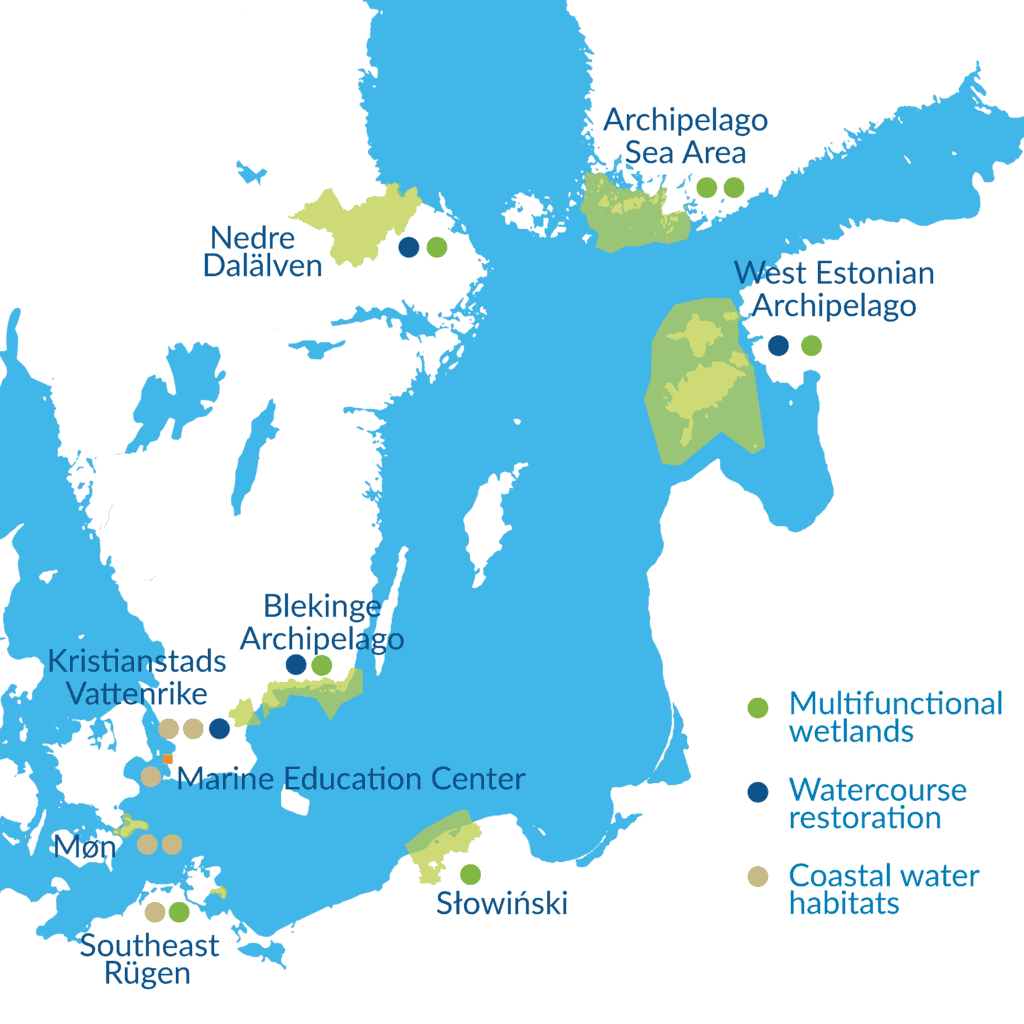
Illustration: Planned learning sites around the Baltic Sea at participating biosphere reserves (including one aspiring biosphere reserves).
1. Taalintehdas Pike Wetlands (Finland) – Multifunctional Wetlands
1a: Högholmen Pike Wetlands
Key Focus: Restoration of spawning areas for pike.
Description: The learning site consists of two small pike wetlands situated close to each other south of the Taalintehdas municipality centre. The bays of interest are situated between Högholmen and Långön as well as between Långön and Apelholmen. The Högholmen island is a recreational area of the municipality.
Partner: Turku University of Applied Sciences – Archipelago Sea Area Biosphere Reserve
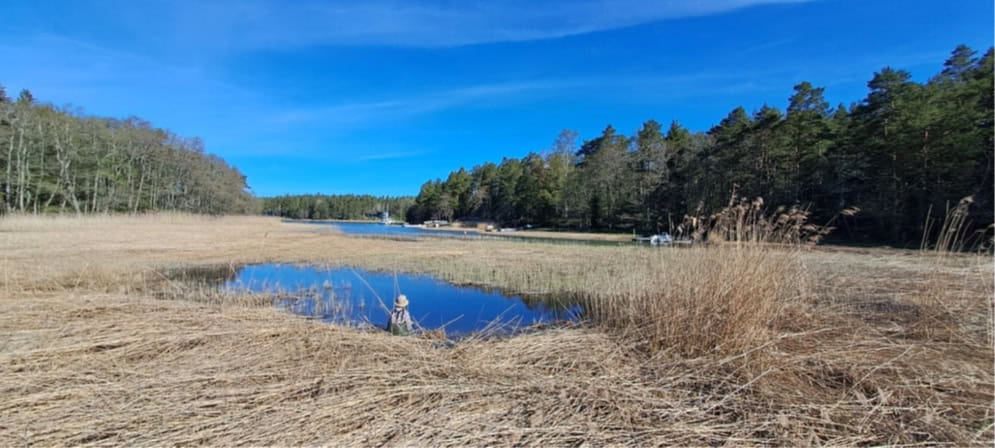
Image: Långön-Apleholmen. Photo: Heli Kanerva-Lehto
1b: Sjölax Gård Pike Wetland
Key Focus: Enhancing spawning grounds in reed bed shore areas.
Description: The learning site consists of a large reed bed shore area and the site is situated Southeast of the Kemiö municipality centre. In the shore area, there are small ponds, and narrow however too shallow ditches for the pikes and other fishes to spawn.
Partner: Turku University of Applied Sciences – Archipelago Sea Area Biosphere Reserve

Image: Sjölax Gårds, Nässudden. Photo: Nanni Piiparinen
2. Brattnäs Reed Wetland (Finland) – Multifunctional Wetlands
Key Focus: Restoration of reed wetlands for nutrient retention and habitat creation.
Description: Brattnäsviken is a shallow sheltered bay situated southeast of Parainen municipality center. The bay consists of a large reed bed shore area. The area has been studied already in other projects conducted by Turku UAS, e.g., species have been mapped (birds, dragonflies, frogs and bats) and reed cutting was performed in 2022.
Partner: Turku University of Applied Sciences – Archipelago Sea Area Biosphere Reserve
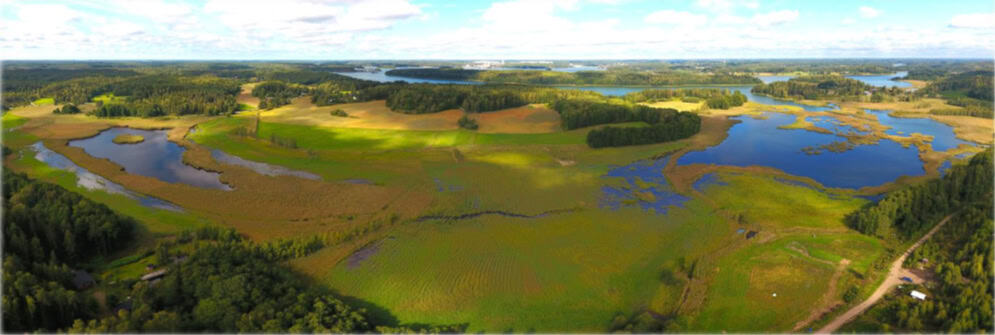
Image: Brattnäs reed wetland. Photo: Jerome Tornikoski
3. Hiiumaa Wetlands (Estonia) – Multifunctional Wetlands
Key Focus: Coastal lagoons and wetlands restoration.
Description: The learning site is situated in the village of Kõrgessaare on the island of Hiiumaa, surrounded by coastal lagoons and wetlands nourished by streams and creeks. The area is rich in natural values, including bird habitats, fish migration routes, and habitats of the European mink. Historically, some of these wetlands have been transformed into water reservoirs.
Partner: Estonian University of Life Sciences – West Estonian Archipelago Biosphere Reserve
4. Nuutri River Restoration (Estonia) – Watercourse Restoration
Key Focus: Restoring upstream stretches for biodiversity.
Description: The learning site is located on Hiiumaa Island in the town of Kärdla. focusing on the upstream waters of the Nuutri River and the impact of natural and agricultural areas. The site aims to enhance local awareness of water-related issues and adress the limited local understanding of how water functions within the landscape.
Partner: Estonian University of Life Sciences – West Estonian Archipelago Biosphere Reserve
5. Słowiński National Park Wetlands (Poland) – Multifunctional Wetlands
5a: Łupawa River, Smołdzino Municipality (existing NBS)
5b: Gardno Lake floodplain, Smołdzino Municipality (existing NBS)
5c: Gardno Lake floodplain, Retowo, Smołdzino Municipality (new NBS)
Key Focus: Water retention, flood protection, and biodiversity improvement.
Description: The learning site is located within Słowiński National Park, in an area characterized by multifunctional wetlands. This is a key ecosystem with potential to improve water retention, enhance flood protection, and supporting biodiversity. The specific site encompasses areas along the Łupawa River and the Gardno Lake floodplain in the Smołdzino Municipality, where existing nature-based solutions are already in place, providing a strong foundation for further development and exploration.
Partner: Slowinski National Park – Słowiński Biosphere Reserve
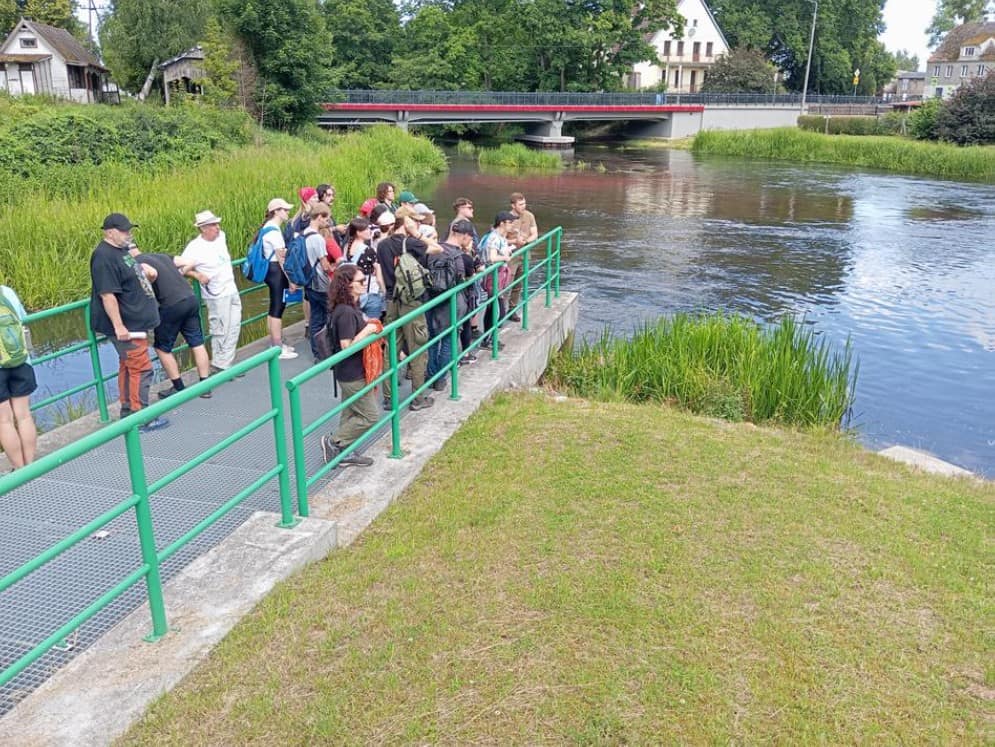
Image: Group of students and academic lecturers at the outlet of the fish pass on the Łupawa River. Photo: G.Kupczak
6. Nadelitz Wetland Restoration (Germany) – Multifunctional Wetlands
Key Focus: Accessible educational site with wetland restoration.
Description: The project area for the wetland restoration is in the village of Nadelitz on the outskirts. On one side, the project area borders on an agricultural hall. To the south and east, it is surrounded by arable land. To the west, there is a paved path that connects the village of Nadelitz with Muglitz. The arable land slopes slightly down to the project area, which forms a damp depression that is currently covered with willow trees and reeds and nettles.
Partner: Southeast Rügen Biosphere Reserve
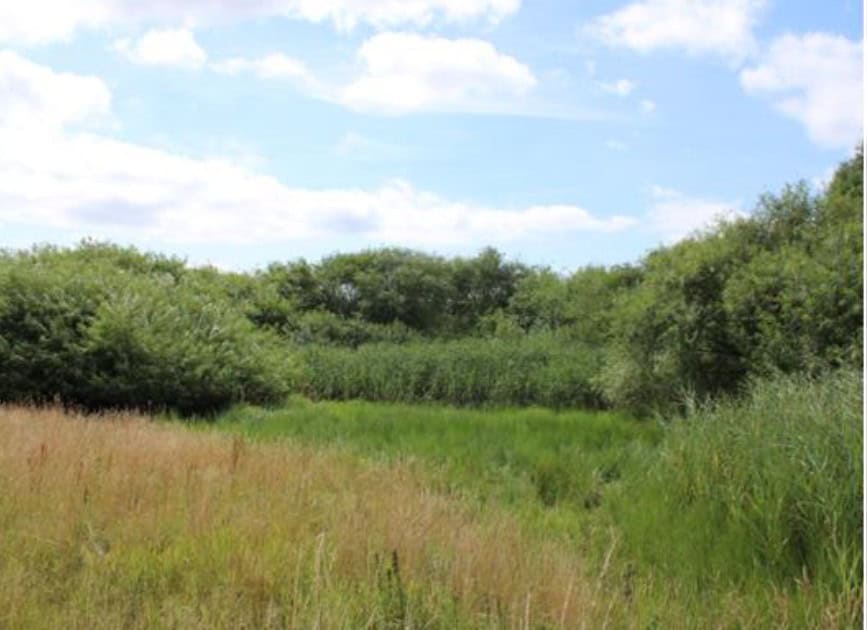
Image: The project area at Nadelitz wetland in summer 2024. Photo: Southeast Rügen Biosphere Reserv
7. Neuendorf Coastal Habitat (Germany) – Coastal Water Habitats
Key Focus: Coastal water habitat restoration with educational opportunities for visitors.
Description: The project area is located on the edge of the village of Neuendorf, which is in the area of the town of Putbus. The project area is easily accessible as a learning location thanks to a nearby paved path and an easily accessible section of beach. Stone fishing used to take place in the area mentioned. The relatively shallow water means that the learning location can later also be visited by swimming or snorkeling.
Partner: Southeast Rügen Biosphere Reserve
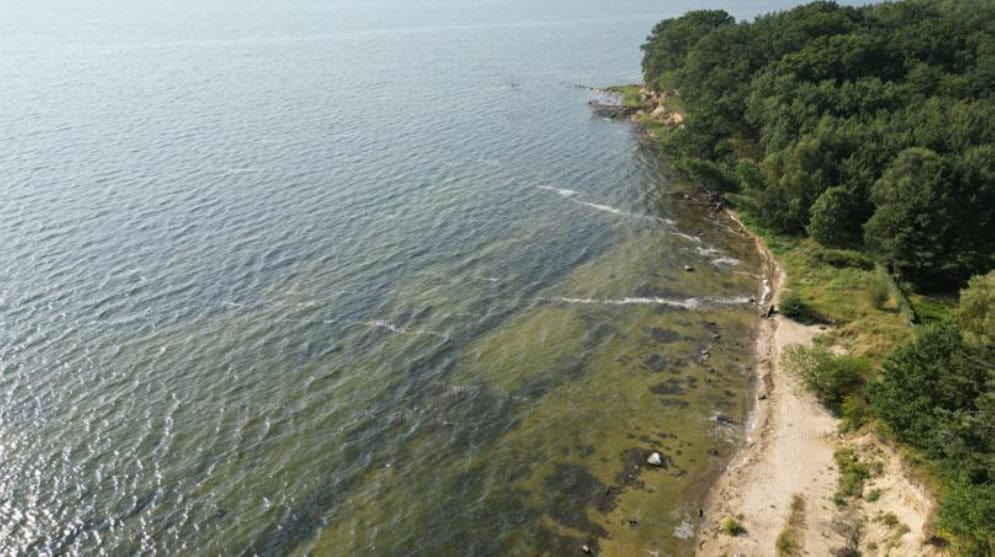
Image: The project area at Nadelitz Wetland in summer 2024. Photo: Southeast Rügen Biosphere Reserve
8. Stone Reef Restoration on Møn (Denmark) – Coastal Water Habitats
Key Focus: Rebuilding stone reefs for marine biodiversity.
Description: The pilot stone reef and learning site will be located along the coastline of the southwestern part of the island Møn. Historically, this area featured natural stone reefs which were removed due to intensive stone-fishing activities. The lack of stone reefs has a huge negative impact on the marine biodiversity and we want to show how the rebuilding of stone reefs can restore some of the lost biodiversity
Partner: Vordingborg Municipality – Møn Biosphere Reserve
9. Harbor Structures on Møn (Denmark) – Coastal Water Habitats
Key Focus: Utilizing structures for habitat improvement in coastal areas.
Description: The learning site is located on the island of Møn in Klintholm Harbour, owned by the Municipality of Vordingborg. There is strong interest in using parts of the harbour for habitat improvement while simulataneously establishing it as a learning site. Klintholm Harbour is the most visited harbour in the municipality, offering significant potential to attract visitors to the learning site.
Partner: Vordingborg Municipality – Møn Biosphere Reserve
10. Marine Education Center (Sweden) – Coastal Water Habitats
10a: Södra Varvsbassängen
Key Focus: Restoration of shallow seabeds in an urban industrial area to enhance marine life.
Description: This former industrial harbor is being transformed into a modern district, featuring an underwater park of 52,000 m². Shallow sandy bottoms and rocky reefs were restored in 2023, and marine species such as eelgrass, flatfish, bluefish, and mussels have quickly returned. This area now serves as a safe and biologically rich learning site.
10b: Nyhamnen
Key Focus: Urban restoration to reconnect the city with its maritime heritage.
Description: Nyhamnen links the working port with the city center, serving as a bridge between old and new. Restoration efforts are underway to transform the basin into an inviting urban space, while also supporting marine biodiversity. Plans include a city park and swimming areas.
10c: Marine Education Center / naturum Öresund
Key Focus: Coastal protection and habitat restoration using nature-based solutions.
Description: Ribersborg, a 3 km sandy beach, is home to the Marine Education Center and Naturum Öresund, a national visitor center. Recent efforts include the construction of a new jetty and a breakwater reef to protect the shoreline from storm damage, while also creating habitats for marine species. The site receives 35,000 visitors annually.
Partner: Marine Education Center

Image: Costal protection at Marine Education Center / naturum Öresund (learning site 10c). Photo: Michael Palmgren
11. Mjöån River Restoration (Sweden) – Watercourse Restoration
Key Focus: Enhancing spawning sites for sea trout using natural materials.
Description: The learning site is located along a 100-meter stretch of the Mjöån River near Östra Sönnarslöv, on municipally owned land, 5 km downstream from Huaröd. Focus is on improving existing sea trout spawning beds using the Hartijoki method, which loosens substrate to create optimal conditions. The flow habitat is enhanced through placement of boulders and construction of flow concentrators made from riverbank wood or boulders from the edges. The learning site will demonstrate nature-based solutions such as spawning ground restoration and shade planting.
Partner: Kristianstad Municipality – Kristianstads Vattenrike Biosphere Reserve
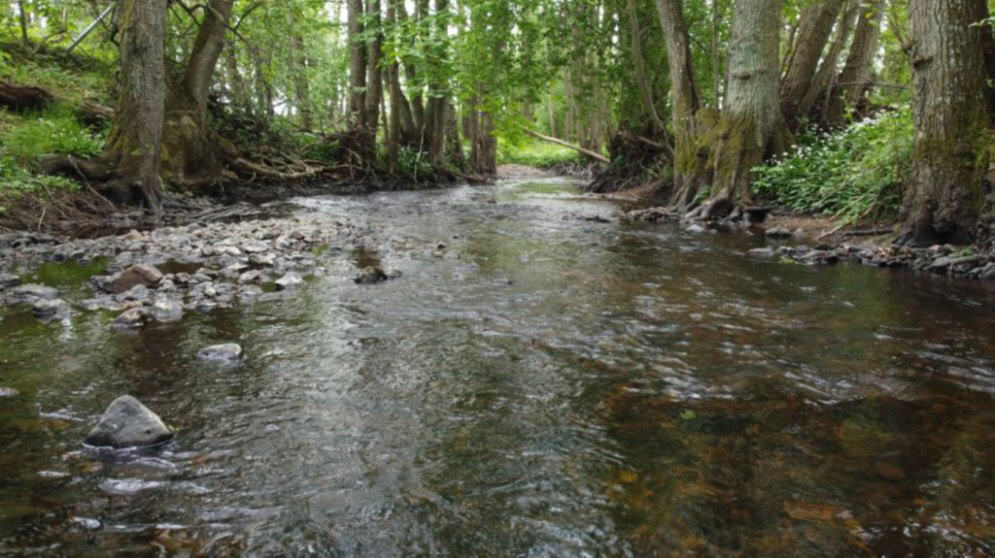
Image: Mjöån river. Photo: Kristianstads Vattenrike Biosphere Reserve
12. Äspet Stone Reef (Sweden) – Coastal Water Habitats
Key Focus: Stone reef restoration for marine habitat improvement.
Description: The Äspet Stone Reef and learning site will be established off the coast of Åhus. Its final location will be determined in collaboration with local fishing rights holders and informed by their historical knowledge and observations.
Partner: Kristianstad Municipality – Kristianstads Vattenrike Biosphere Reserve
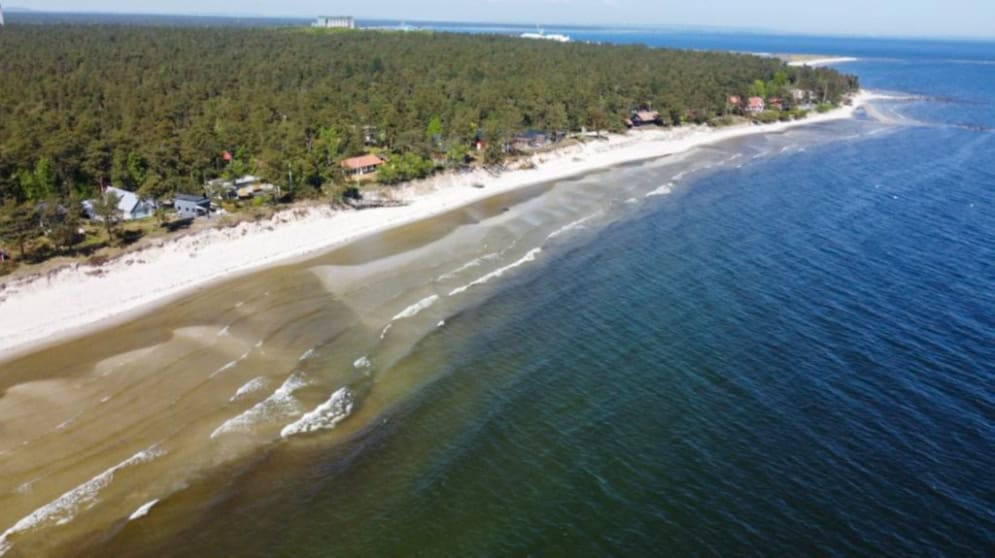
Image: Coastline of Äspet in Åhus. Photo: Kristianstads Vattenrike Biosphere Reserve
13. Åhus Harbor Structures (Sweden) – Coastal Water Habitats
Key Focus: Harbor structure improvements for biodiversity.
Description: The learning site will be located along the promenade at Gamla Skeppsbron in Åhus, adjacent to the quay where one set of structural plates will be installed. Another set of plates will be placed in the Port of Åhus. These plates are designed to enhance biodiversity in harbor environments by creating habitats for aquatic organisms, which will be showcased at the learning site.
Partner: Kristianstad Municipality – Kristianstads Vattenrike Biosphere Reserve
14. Karlshamn and Brunnsparken Wetlands (Sweden) – Multifunctional Wetlands
14a: Karlshamn Wetland Revitalization
Key Focus: Restoration of wetland through small measures with a path for educational purposes.
Description: The learning site is situated in a drained wetland near the Karlshamn railway station, which is undergoing restoration through small-scale measures to revitalize the area. A pathway will be built around the wetland to enhance accessibility for visitors.
14b: Brunnsparken Wetland Ronneby
Key Focus: A well-visited recreational area with educational potential for wetland restoration.
Description: The learning site is located near Fågelsjön (the Bird Lake) in Ronneby Brunnspark, close to both Naturum Blekinge and Blekinge Archipelago Biosphere Reserve. It is easily accessible for local schools and will include a pathway with educational signs to enhance learning opportunities.
Partner: Ronneby Municipality – Biosphere Reserve Blekinge Archipelago
15. Learning Site: Mieån and Mörrumsån River Restoration and Landscape forming processes (Sweden) – Watercourse Restoration
15a: Mieån River Restoration
Key Focus: Fluvial processes and landscape forming processes.
Description: The learning site is located along a slow-flowing stretch of the Mieån River in Karlshamn Municipality, Blekinge. The site will highlight fluvial processes and the role of natural hydrology in a watercourse, as well as the importance of effective river management for enhance biodiversity and ecosystem services.
15b: Mörrumsån River Habitat Restoration
Key Focus: Fluvial processes and habitat restoration near visitor centers.
Description: This learning site, located on the Mörrum River near the Mörrum Kronolaxfiske visitor center, will showcase fluvial processes and the importance of natural hydrology in watercourses and restoration efforts. It will feature small restoration areas near the visitor center, providing opportunities for hands-on practical learning.
Partner: Ronneby Municipality – Biosphere Reserve Blekinge Archipelago
16. Urban Wetland (Sweden) – Multifunctional Wetlands
Key Focus: Stormwater regulation and purification, biodiversity enhancement in urban areas.
Description: This urban learning site is located in a green area in central Hedemora, situated below a sports field. The site has the potential to serve multiple purposes: cleaning stormwater, reduce flood risks, enhance biological diversity and provide a recreational space for the community.
Partner: Biosphere Reserve Nedre Dalälven

Image: Visit at the planned urban learningsite. Photo: Magnus Pamp
17. Olsbäcken Creek and Jönshytteån Stream Restoration (Sweden) – Watercourse Restoration
Learning Site 17a: Olsbäcken Creek Restoration
Key Focus: Restoration of sea trout spawning grounds.
Description: Olsbäcken is a creek that flows through a nature reserve/Natura 2000-area and into the Baltic Sea. Sea trout swims into the creek and try to reproduce, but because Olsbäcken, just like most other water courses in southern Sweden, has been cleared of stones and straightened, there is a lack of suitable spawning and breeding grounds. Another problem is that the creek often runs dry in summer. The main reason for this is that the lake upstreams was drained in the 1930s.
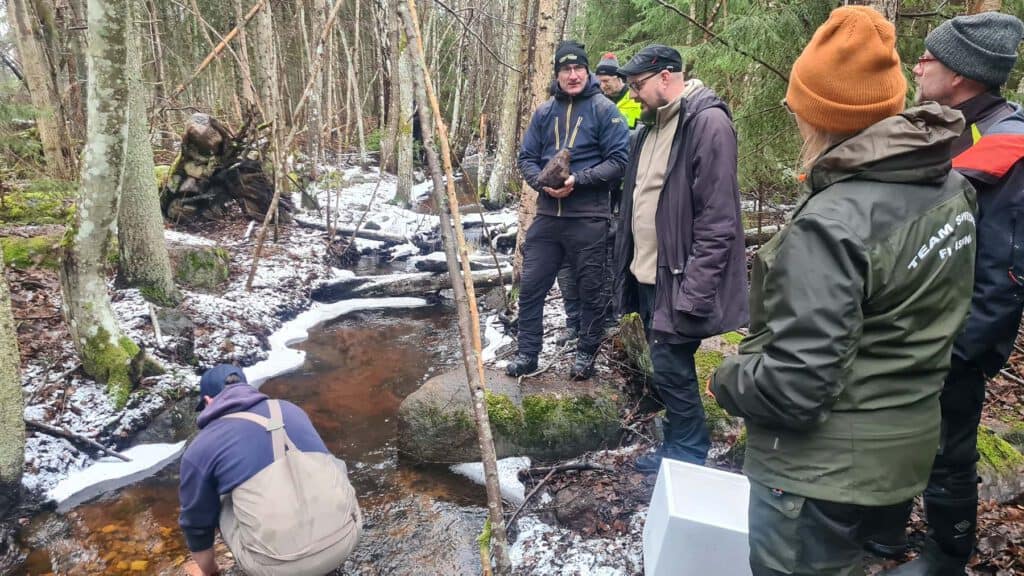
Image: Field activity at Olsbäcken Creek. Photo: Magnus Pamp
Learning Site 17b: Jönshytteån Stream Restoration
Key Focus: Restoration of trout habitats, integrating cultural and historical aspects.
Description: Jönshytteån, Säter, is a stream that flows between two inland lakes. The area is covered in forest but is easily accessible. There are trout in the stream, but spawning and rearing areas should be improved by loosening the gravel in the bottoms. In the area there are several sites of archaeological and historical interest and a hydroelectric dam, which has caused a delay in the permitting process with County Administrative Board.
Partner: Biosphere Reserve Nedre Dalälven

Image: Learning by Doing: Stream Restoration at Jönshytteån. Photo: Magnus Pamp



